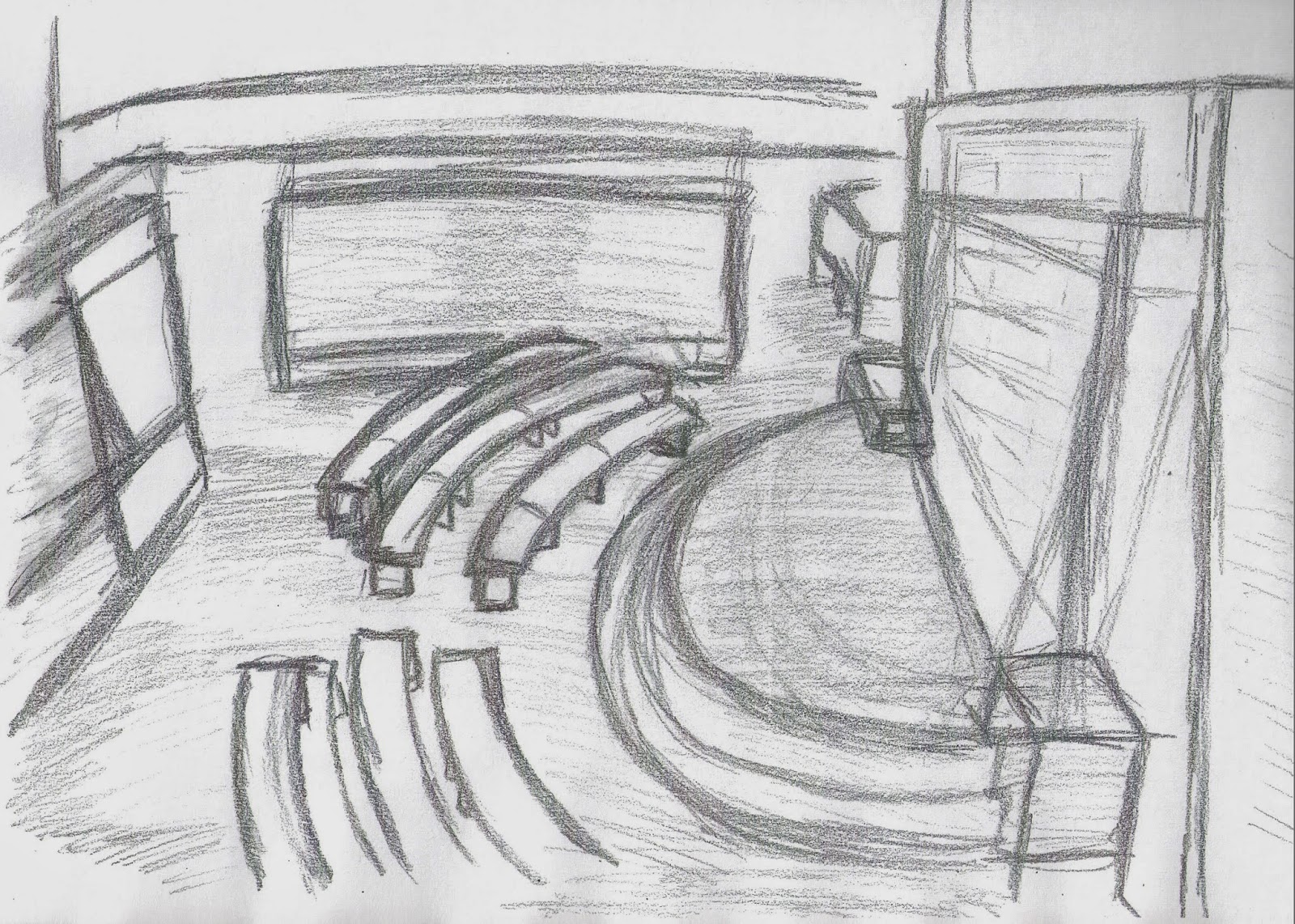Classical interiors is a lot harder to draw than modern day. This is because of the more complex and detailed architecture involved. In the drawing above I have shown the detail that is involved with classic interior in a small but effective drawing. I used brown conte crayon as I felt this was the most effective tool to use. I also used different strengths of shading throughout the drawing to create the natural light.
This interior was made of stone. I wanted to try and show this using the conte crayon. I wanted to show this because the type of texture that the interior is made of affects many different things. An example of this is the reflective lighting or light on the types of materials in the environment.
I have left in the mistakes as this shows the stages that I went through to get the final piece of work. The most common mistake that was made was in the drawing of the angles. This was because I had done the drawing at an angle itself. Doing this I was able to learn from my mistakes and be able to fix and develop them. Overall I learnt a lot about classical architectures with shading and angles.




